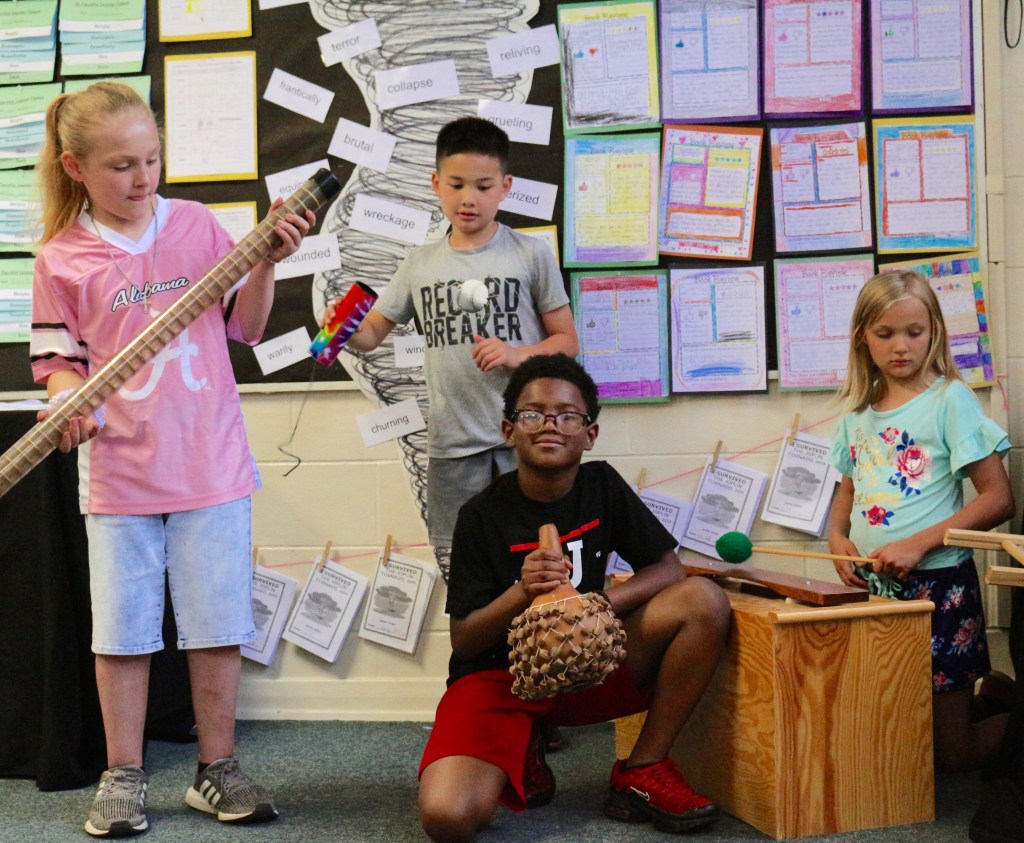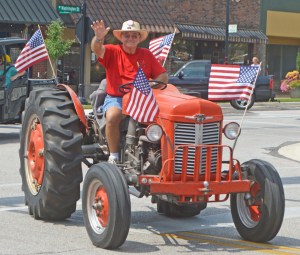STORM STUDENTS: Third graders learn how to prepare for tornadoes
Published 6:45 am Friday, May 3, 2019

- Third graders from HEART Academy at Julian Newman Elementary School — Kinsley Eubanks, left; Aidan Ennis; Labron Turner, kneeling; and Genesis Wright — play instruments Thursday that mimic the sounds of tornadoes. The four third-grade classes at the school have spent six weeks learning about tornadoes using writing, social studies, science, math and health.
When third-graders at HEART Academy at Julian Newman Elementary began learning about tornadoes, student Genesis Wright said she was worried.
“I was scared at first because of Joplin,” she said, referring to the EF-5 tornado that devastated Joplin, Missouri, in 2011. “I thought we were learning about them because there was gonna be one.”
Trending
By the end of their six-week project-based learning unit on the subject, Wright and her classmates were prepared to identify dangerous storms, remain safe during a tornado and gather key items needed in the aftermath. In doing so, they reached their ultimate goal: to share this newfound knowledge with the community through posters and slideshows.
When the six weeks was up, Wright didn’t feel scared anymore, she felt empowered, as did the other students.
Ask them what they learned during the unit and they rattle off a litany of points from what kind of clouds produce tornadoes (cumulonimbus), to the historic frequency of each type of tornado (EF-1 to EF-5), to what you should keep in your tornado-preparedness bag (flashlight, water and cash, to name a few things).
Surviving Joplin
One of the most exciting lessons came from reading a book written by a little girl who survived the Joplin tornado. Over a three-week period, students read “I Survived the Joplin Tornado, 2011” by Lauren Tarshis.
“While we were reading it, you could hear a pin drop,” said teacher Nicole Collins.
Trending
The tornado unit required students to use all of their required subject areas — writing, language arts, social studies, science, math, reading and health, said teacher Katie Deen.
Teacher Katie Harbin said the students made safety bags to take to the place where they shelter during a storm — in a closet, under a staircase or in a basement. None of the children in the four third-grade classes had access to an in-ground shelter built especially for tornadoes, the teachers said.
Before the six-week course, the students didn’t know why they had to find somewhere safer when a storm approached, Nay said. Afterward, they understood.
Deen said students learned many in Joplin were killed or injured because they were caught off guard. They didn’t heed tornado sirens and take cover swiftly enough.
Collins said the students went through a storm spotters guide, learning the different types of storm clouds, drawing them and monitoring the weather outside each day. She said art teacher Leah Pierce even made the students cloud viewers — a rectangular border of various cloud photos with an opening in the middle so the student could position the cloud of the day for comparison.
Harbin said the students expanded their math skills by creating word problems with elapsed time, such as how much time elapsed between the first warning until the tornado was over. Collins said they also learned how to plug into a bar graph or chart information about the frequency of EF-1 to EF-5 tornadoes throughout history.
The teachers thanked teacher Jill Runne for creating various musical instruments so students could replicate the sounds of a major storm — hail, rain, wind, thunder, lighting and pelting debris, among others. Students even used cardboard boxes, clay and other materials to show a miniature version of where they should shelter in place at home.
Storm chaser and other visitors
Sometimes during the six weeks, outsiders would come to instruct the students, such as storm chaser Jeff Piotrowski, who filmed the rain-wrapped tornado in Joplin along with his wife and helped rescue people; meteorologist Taylor Plott from CBS-42 in Birmingham; and members of the Limestone County Emergency Management Agency.
When all was said and done, “the driving question of the project was teaching the community how to be prepared and be safe” during a tornado, Deen said.
To that end, the students made posters listing how to respond to tornadic weather and what items to put in their storm bags. They plan to put the posters up throughout the community at places like the library and Kreme Delite. Residents can scan the posters with their cellphones and see a slide show of what to put in their own storm bags.






